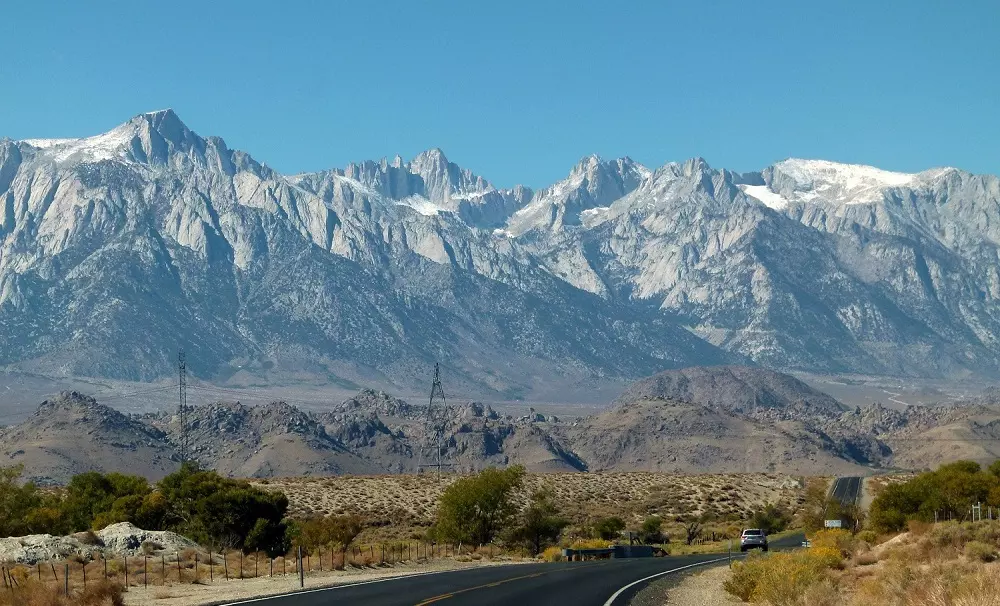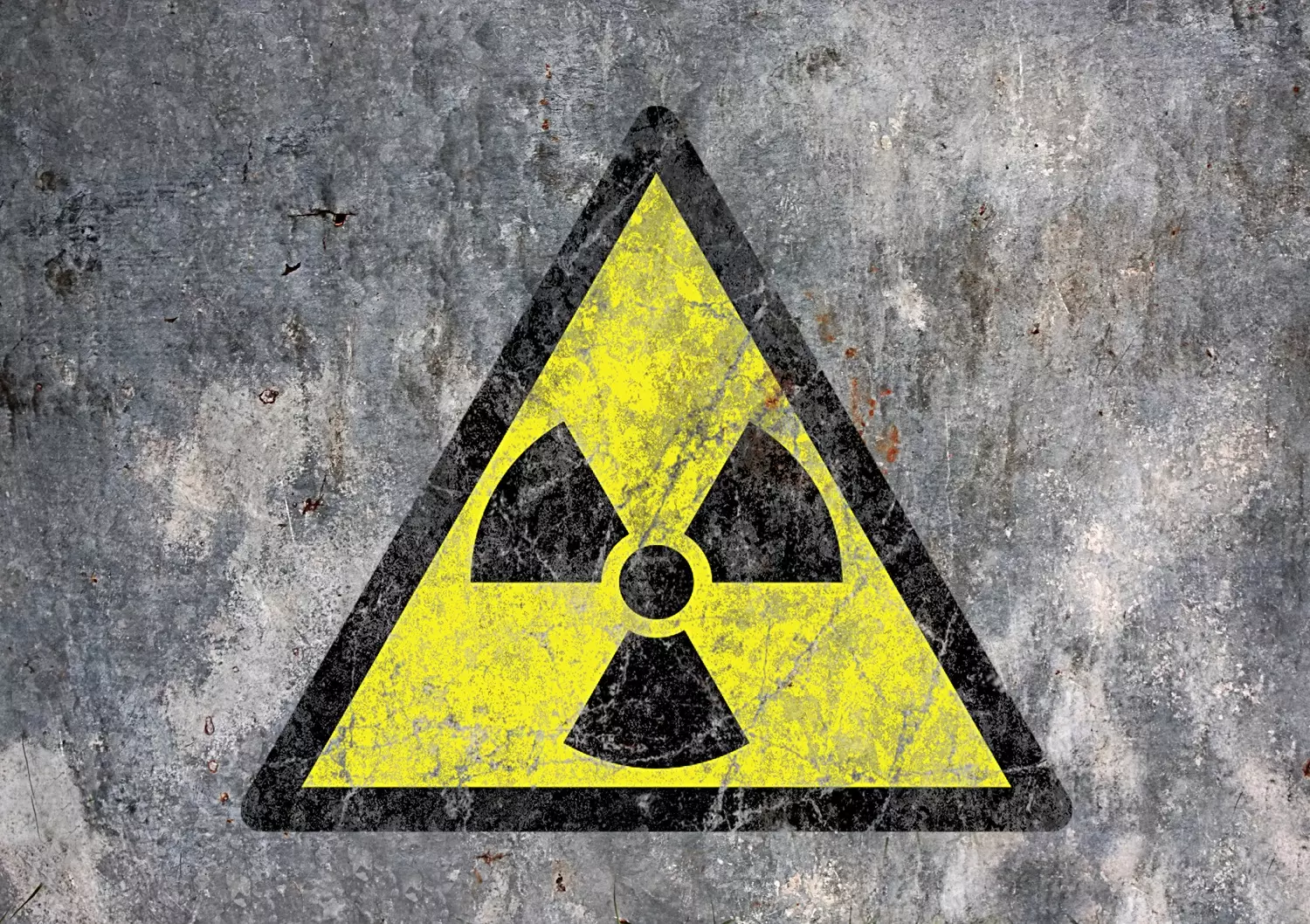Would it be crude to accuse some of our more common rocks of passing gas? It’s true! According to the U.S. Environmental Protection Agency, granite rock from coast to coast is outgassing radon—a colorless odorless gas—in such quantities that the U.S. Center for Disease Control asserts this radioactive gas is the second leading cause of lung cancer behind only cigarette smoking.
These grim statistics explain why January is National Radon Action Month. What isn’t explained is why this is also a…
Fatal problem for the modern legend of geologic ‘deep’ time
In the 1950’s the U.S. Geologic Survey dated the Sierra Nevada granite in my area at an age of between 80-120 million years based on Potassium (the “parent” element) decaying to Argon (“daughter” element).

Imagine an hour glass with the parent element in the top section taking 1.2 billion years to half empty into the lower section. This rate of decay is called a half life, meaning every 1.2 billion years half of the parent element is gone. In simple terms the process of dating volcanic rocks in the twentieth century is to measure the amount of such daughter elements to find the age of the rock.
Now imagine a second hour glass. This one has radium in the top section draining into radon in the lower section at the rate (half life) of only 1600 years! The daughter element, Radon, only has a half-life of another 3.8 days. Granite, like most volcanic rocks, has several pairs of parent-daughter elements, so geology text books tell us that if we apply this dating process using multiple pairs of decaying isotopes (our hour glasses) we should get the same age from both.
When the results yield wildly different results the process fails. Rather than advertising this problem, American academics promoted the old age results as the consequence of a highly scientific (nuclear physics) “method” in textbooks as far back as the 1940’s. Thus, your teacher’s teacher likely never heard that this dating method was (and is) theoretical, much less that it fails when tested!
Yet, each year people die of this deadly gas which, owing to its very short half life, shouldn’t even be detectable if the granitic continental bed rock was even close to the age we are taught today! Pass this on to a student that will be subjected to the myth of geologic time in public school curriculum.
Case Study: Radon in the Sierra Nevada Mountains
 The prevalence of dangerously high levels of short lived radium and radon gases in and near Sierra granitic plutons is massive evidence debunking the long age assigned to the rock.
The prevalence of dangerously high levels of short lived radium and radon gases in and near Sierra granitic plutons is massive evidence debunking the long age assigned to the rock.
Of the three major classifications of rock (igneous, sedimentary, and metamorphic) only those solidifying from the molten state (igneous) are thought to be chronologically datable in absolute terms and this by use of radioactive decay rates whereby unstable isotopes degrade into more stable elements. The practice of measuring the time lapse since the molten state using the potassium to argon “method” became the accepted procedure and product of the twentieth century.
Igneous rocks are host to several different elements. The rate at which each element decays varies widely and is described in terms of its “half-life” which is the time required for half the original element (a.k.a. parent element) to decay into the more stable “daughter” element¹. In the locally dominant granodiorite, radium, radon, potassium, argon, plutonium, and polonium are invariably among the elemental cast of characters, yet the half-life for the first pair is measured in billions of years, the last pair in minutes and radium to radon gas in between at 1600 years¹.
Is there excess radon in or near the granitic plutons of the Sierra Nevada and Carson ranges? This question is both a parody and a paradox. It is a parody of American geologist Steven A. Austin’s research paper on the then ten-year-old dacite plug in Mount St. Helens wherein concentrations of the daughter element Argon (Ar) suggested a radio isotopic age of 350,00 years. His title, “Excess Argon in Mt. St. Helens dacite” calls into question the use of radioactive decay rates to establish absolute ages for igneous rocks whose age is not known, when the process proves wildly wrong on rock whose age is known².
Geologist John K. Reed posts a similar challenge with his 2013 book titled Rocks Aren’t Clocks³, a critique of the geologic time scale. He writes how the conventional dating milieu evolved from what geologist F.M. Gradsteine described as, “the agreed convention” of the 19th century chronostratigraphic scale.
Might the selection of the element used to “date” igneous rocks be based on attempts to corroborate the expectations of the 19th century stratigraphic scale?
Let’s get specific and local
Is reliance on Potassium to Argon dating to determine the geological age of my Southwestern USA area an attempt to embrace millions of years from a half-life of 1.26 billion years? In 1990 I had no sooner completed construction of our home in the Granite Springs subdivision in the lower Kingsbury Grade area of Stateline, Nevada when it was suggested that we test it for radon gas. Readings at the level of the dirt basement were nearly double what the EPA considers actionable for human safety! (University of Nevada, Reno)
Twenty-six years later I learned that properties in the middle of Carson City, Nevada also can emit high enough concentrations of radon gas to be considered a health risk under E.P.A. standards. Since radon gas is said to be a major cause of death by lung cancer, federal grants fund public awareness campaigns near hot spots of radon gas. And the Sierra Nevada and Carson Range are infamous for this.
Given the short half-life of Radium to Radon at only 1,600 years, it is surprising to discover so much radon outgassing from granite thought to have solidified 80 to 120 million years ago. At least this is what we are informed of by U.S.G.S. survey tests (using potassium to argon) and in turn nearly every textbook that mentions the Sierra Nevada mountain range.
Why, I asked a geology professor at University of Nevada, Reno, who administrates the radon extension program, do we use the Potassium to Argon method to date the Sierra granite rather than extremely prevalent radium to radon? His email response4 affirmed that the former was easier and the later would “produce too young an age.”
Both geology textbooks and logic tell us we should get similar isotopic ages when using multiple different elements to date the same specimen rock. Evidently those teaching the process expect this result between long and short age isotopes, but fail to realize that such conflict invalidates the whole dating process rather just than the inconveniently young age!
The paradox is that we date rocks using a complex, expensive, and theoretical process while ignoring the element so dangerous it is a widely-acclaimed killer and so prevalent as to be measurable with simple test kits often distributed for free!
An alternate theory
Is it possible that the Sierra granitic plutons solidified more recently and perhaps more quickly than is presently accepted? It would be consistent with the earlier research findings of nuclear physicist Robert V. Gentry5:
While employed at the Oak Ridge National Laboratory in new Mexico, Gentry studied halos “which appeared to have arisen from Po-218 rather than U-238 and concluded that solid rock must have been created with these polonium inclusions, which decayed with a half-life of 3 minutes. They could not have been formed from molten rock which took many millennia to cool (the standard theory) because polonium decays in a few minutes.” The halos observed are the two-dimensional view of a three-dimensional spherical effervescence of the daughter element during its brief half-life.
One might be distracted or confused by the challenges to Gentry’s conclusions which some claim to be influenced by his theology. We understand from the theory of Bowen’s reactions that both chemistry (abundance of elements) and conditions (pressure and cooling) influence the structure of all silicates. Could the crystalline structure of granodiorite occur rapidly as Gentry believes?
Radon is a colorless odorless gas with fatal implications and it is too often still being emitted by real rocks into real homes today. Are we teaching students how to think critically or are we telling students what to think based on theoretical physics being presented to students as a scientific “method?”
Clearly, the reality like the gas itself, has breathtaking consequences.
Works Cited
- Elert, Glenn. “Half Life.” Half Life – The Physics Hypertextbook
- Austin, Steven A. “Excess Argon within Mineral Concentrates from the New Dacite Lava Dome at Mount St. Helens Volcano.” Creation Ex Nihilo Technical Journal Vol. 10 (Part 3)
- Rocks Aren’t Clocks by John K. Reed, available from the Creation Research Society
- Arehart, Gregory B., Dr. “More Radon Information.” Message to the author. 07 Nov. 2016. E-mail.
- Gentry, Robert V. “Giant Radioactive Halos.” Science 169 (1970): For more research see Radiohalos—A Tale of Three Granitic Plutons by Dr. Andrew A. Snelling and Mark Armitage on August 19, 2009








Sure, people like to talk about helium and zircon, but not so much about radon. I found this article to be very informative and helpful, and included a link to it in a post I wrote up about helium, and also posted it at The Question Evolution Project. Thanks for writing this.
It was a pleasant surprise to learn about this! I’ll let Bill know you appreciated it. 🙂
Bill says, “Glad to see this comment and the challenge to evolution next month. Not that it (evolution) was a credible theory, but it’s really in trouble without the magic of unlimited time!”
Evolutionists themselves have rejected dating methods as producing ages that were too great — when the date concerned something they believed evolved more recently! I have in mind a famous hominid fossil in Africa and what appeared to be human footprints in Mexico. These and perhaps one or two other cases might form the basis for a good article in the future.
Deliberate obfuscation to the “n”th. degree…with fatal consequences.
Interesting, so with your way of thinking how old are those rocks?
Depending on which translation of scripture one uses, creation week would be between six and eight thousand years ago, but there are at least a dozen other lines of chronology (i.e. lunar orbit decay, ocean salinity, C14, magnetic field decline, etc.) to suggest an earth age less than 50,000 years. Einstein could tell there had to be a creator God, he just failed to recognize scripture as the way to know Him. The more we compare the biblical narrative to the stratigraphic record of the most profound events in earth history (fossil record of the flood, plate tectonics, etc.) the more scripture is seen to be inerrant. It therefore seems logical to go with the biblical timeline. Rather than quibble over 1,000 years I suggest we contrast single digit thousands with the double digit billions promulgated by academic legend through incessant repetition rather empirical evidence.
Steno’s Principal of Superposition rules! New stuff’s on top, old stuff’s at the bottom. Simply apply this principal to dinosaur mass graveyards. Are they half way down as depicted in the text book illustrations? Or are they sprouting from the surface layer?! Is it possible the illustration shows what an evolutionist would expect to find based on the legend of geologic time?